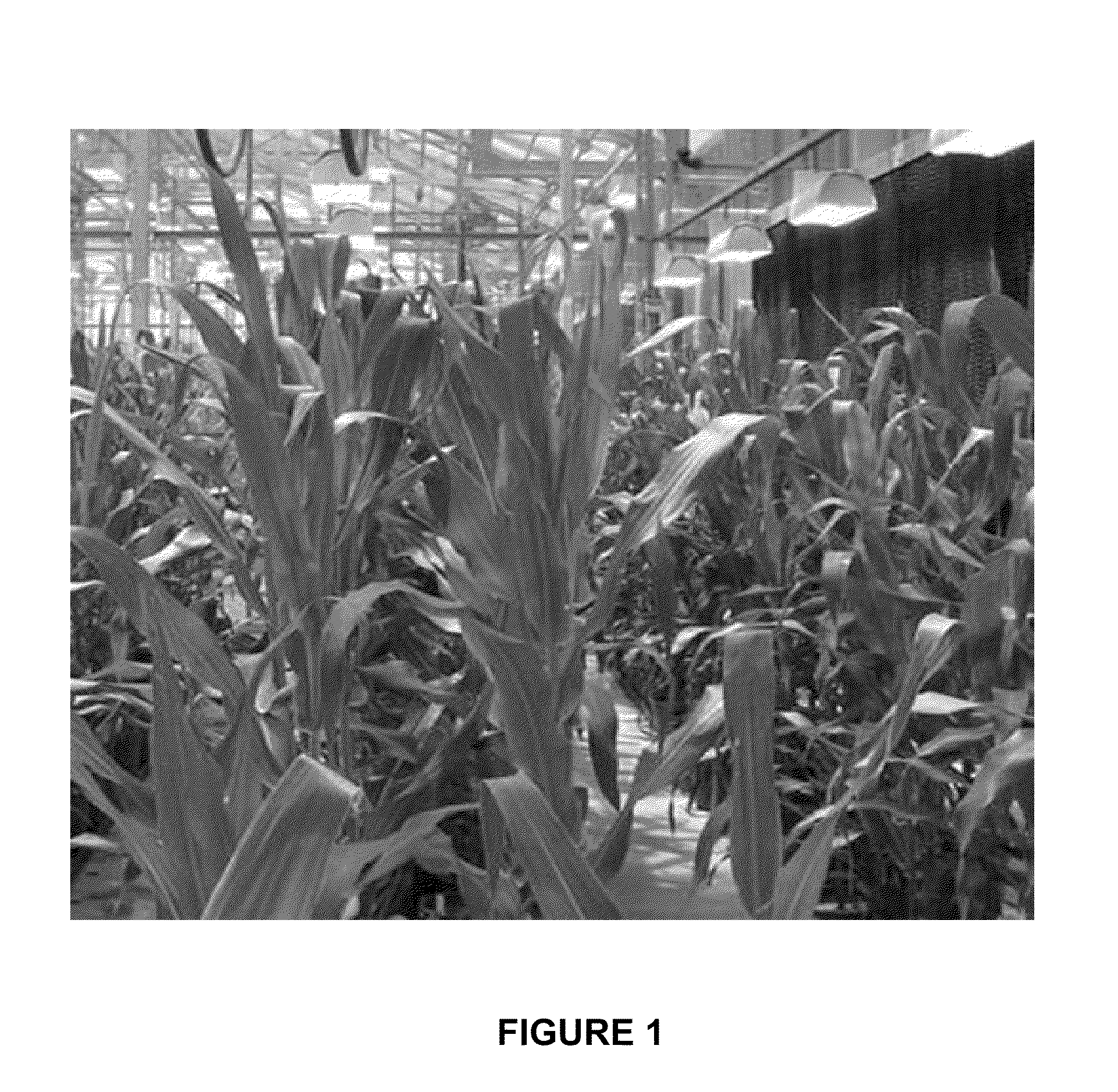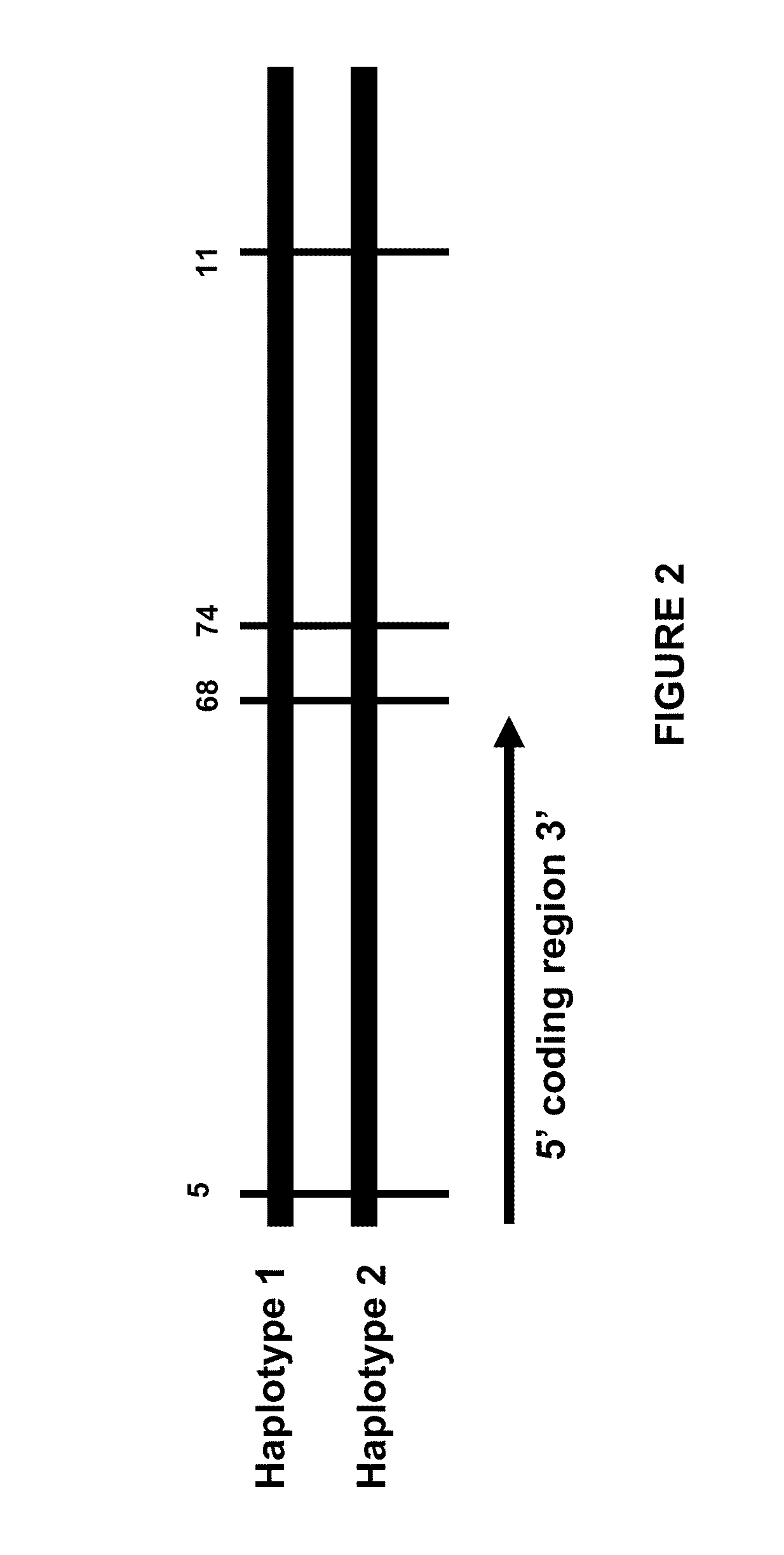Method for Optimization of Transgenic Efficacy Using Favorable Allele Variants
a technology of allele variants and optimization methods, applied in the field of optimization of transgenic efficacy using favorable allele variants, can solve the problem that the potential of transgenes may not be at their maximum, and achieve the effects of increasing or decreasing the level of yield improvement of polypeptides, increasing plant yields, and increasing grain yields in cereals
- Summary
- Abstract
- Description
- Claims
- Application Information
AI Technical Summary
Benefits of technology
Problems solved by technology
Method used
Image
Examples
example 1
Favorable Alleles of Maize Growth Enhancing Genes
[0221]Favorable alleles of these growth enhancing genes can be identified in the germplasm by their significant association with important agronomic traits. These allele variants can be tested in transgenic plants for transgene efficacy.
[0222]Transgenic tests of two genes (ARGOS1 and ERECTA A) illustrate one potential application of this method. In Arabidopsis, both ARGOS (Hu, et al., (2003) Plant Cell 15:1951-1961) and ERECTA (Shpak, et al., (2004) Development 131:1491-1501, Shpak, et al., (2003) Plant Cell 15:1095-1110) genes have been shown to play important roles in plant and organ growth, and cell proliferation. The AtERECTA gene also controls drought tolerance by regulating transpiration efficiency (Masle, et al., (2005) Nature 436:866-870). In maize, ZmARGOS1 and ZmERCTA A both show transgenic efficacy in enhancing plant growth, grain yield and attributes in stress tolerance.
[0223]Favorable allele variants of both genes have be...
example 2
Allele Variants of Maize Growth Enhancement Genes from Different Heterotic Pools Function Together Through Molecular Stacking
[0230]Different allele variants of the favorable alleles can be molecularly stacked and function together to enhance plant growth.
[0231]Genetic association has identified favorable allele variants for both the ZmARGOS1 and ZmERECTA A genes. The favorable alleles, one from each of the heterotic pools (SSS and NSS), are molecularly stacked to form heterozygous allelic combinations. Molecular stacks containing heterozygous allelic combination of the protein coding allelic variants and the promoter allele variants plus the protein coding can be made as follows:
[0232][Ubi:ZmARGOS1 favorable allele (haplotype1)]+[Ubi:ZmARGOS1 favorable allele (haplotype2)]
[0233][Enhacer+ZmARGOS1 promoter+protein coding (haplotype 1)]+[Enhacer+ZmARGOS1 promoter+protein coding (haplotype 2)]
[0234]The former stack provides an allelic combination of the transgene to create heterotic eff...
example 3
ZmARGOS Allelic Variant Characterization
[0238]Favorable allele variants are different at the molecular levels, amino acid sequence, nucleotide sequence and transcript expression regulation; potentially confer functional differences in impacting plant phenotype.
[0239]Analyses of ZmARGOS1 and ZmERECTA A have shown sequence variation among haplotypes / alleles. Allele variants of ZmARGOS1 differ at the levels of amino acid sequences of encoded protein (FIG. 2) and nucleotide differences (insertion / deletion) in the promoter regions (FIG. 3). The amino acid sequence differences between allele variant potentially confer protein functional changes. The sequence variation in the promoter region potentially affects allele-specific expression regulation. Indeed, allele-specific expression analysis of the alleles in their F1 hybrid progeny showed that the two alleles are differentially expressed at the level of the expression and response to drought stress (FIG. 4). The data support that functio...
PUM
| Property | Measurement | Unit |
|---|---|---|
| temperature | aaaaa | aaaaa |
| temperature | aaaaa | aaaaa |
| pH | aaaaa | aaaaa |
Abstract
Description
Claims
Application Information
 Login to View More
Login to View More - R&D
- Intellectual Property
- Life Sciences
- Materials
- Tech Scout
- Unparalleled Data Quality
- Higher Quality Content
- 60% Fewer Hallucinations
Browse by: Latest US Patents, China's latest patents, Technical Efficacy Thesaurus, Application Domain, Technology Topic, Popular Technical Reports.
© 2025 PatSnap. All rights reserved.Legal|Privacy policy|Modern Slavery Act Transparency Statement|Sitemap|About US| Contact US: help@patsnap.com



